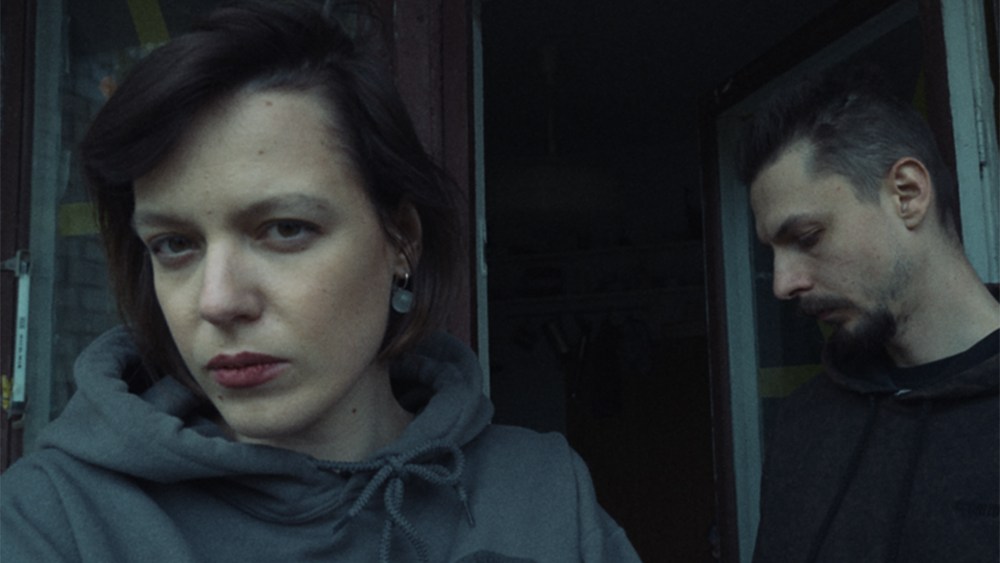The fixed, heartbreaking sounds of conflict — shelling, air-raid sirens, explosions — appear to drown out the voices of these beneath Russian assault in Ukraine. But as Ukrainian residents study to dwell with the devastation that plagues their every day lives, the resilience of the nation’s artists has been nothing wanting astonishing. With the concise but nonetheless haunting “The Two Partitions Rule,” Ukrainian-American director David Gutnik has assembled a sequence of portraits that spotlight folks from throughout the nation who’ve discovered refuge within the metropolis of Lviv. Artists’ experiences, together with a number of the folks behind the scenes who made the documentary.
Filmed in early 2022, simply months after the invasion, “The Two Partitions Rule” is an off-the-cuff meditation on how the continued occupation has upended the non-public {and professional} features of a few of Ukraine’s most artistic folks. These voices embody Lyana Mytsko, director of the Lviv Metropolis Artwork Middle (the place artists can develop and exhibit their work) and rapper Stepan Burban (aka Palindrom), whose lyrics are pointedly in Ukrainian after first makes an attempt in Russian The language tells of the will to chop brief violence. There’s additionally the movie’s sound engineer Mykhailo Zakutskyi, and even producer Olha Beskhmelnytsina. The latter explains her resolution to remain within the nation: not solely to take care of her dad and mom, but in addition to facilitate the cinematic documentation of the occasions.
However utilizing a super-traditional talk-style interview in an article in regards to the difficult enterprise of artwork amid chaos can really feel too aesthetically inert to match the unwavering vitality imbued with the subject material. Gutnick selected a propulsive rating, intelligent digicam actions, and modifying to offer every sequence a movement, composed of pictures that present course of or mirror on every particular person’s every day actions. Whereas The Two Wall Rule is split into three chapters, the chapters usually are not decided by the particular person sharing the reminiscence, however by how Gutnick organized their introspective ideas, which means every part seems A number of voices.
Nonetheless, please word the extraordinarily graphic nature of the footage inserted into these private essays. Burnt folks, decapitated our bodies, and bloated corpses in various levels of decomposition make it virtually unimaginable to not look away. Their inclusion is a deliberate shock to the system, reminding the viewers of the horrific context wherein these artistic endeavors occurred. As cameraman Volodymyr Ivanov talks about how numb he felt to the phobia and insomnia that plagued him, his solemn testimony imbues the documentary together with his virtually flamable anger and disappointment.
For these artists, the “two-wall rule” – which meant looking for shelter within the corridors through the bombing when there was no different refuge – symbolized their conflicts as they struggled to specific their emotions within the face of the ache round them. hole place. They have been each victims and heroes who persevered within the fog of conflict. Nonetheless, making music, portray, and making motion pictures appears trivial within the face of this actuality. In flip, the presence and prominence of “The Rule of Two Partitions” and plenty of different documentaries in regards to the battle additionally reveal that Western audiences can straightforwardly sympathize with Ukraine’s plight as a result of highly effective states unequivocally condemn their perpetrators. However the identical can’t be stated about cope with the continued humanitarian disaster in Palestine and the way the West shares accountability.
Later within the movie, Gutnik powerfully inserts himself into the movie, talking in English in regards to the tragedy that nobody in his household speaks Ukrainian, although all of his closest family have been born in Ukraine. Throughout Soviet occasions, Russian was the language required to acquire employment, an assimilation technique that threatened to remove individuality among the many republics.
This elusive homogeneity is a part of Putin’s rhetoric that Ukraine has no distinct tradition. One look on the whirlwind of recollections and expressions described in The Two Wall Rule reveals the inconsequence of such a ridiculous assertion.
Maybe the picture of a theater in Mariupol earlier than it was destroyed embodies the physician’s stance on the pressing want for artwork even within the bleakest of circumstances. Though the constructing itself now not exists in a usable kind, pictures of its now-distant previous can nonetheless give hope. It was a tangible image of their collective creativeness price combating for. The “Rule of Two Wars” has an analogous goal.

